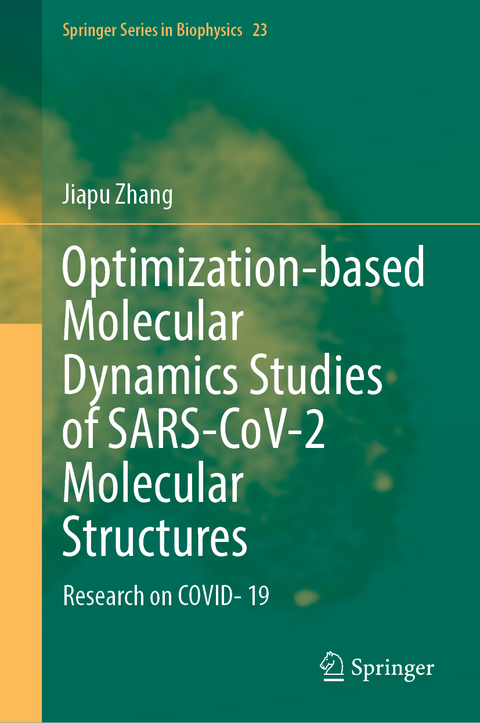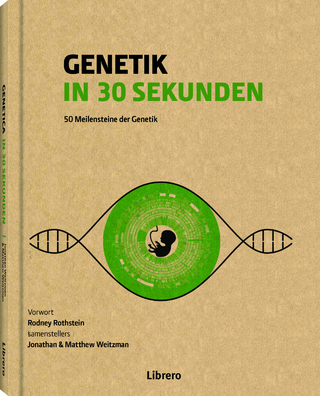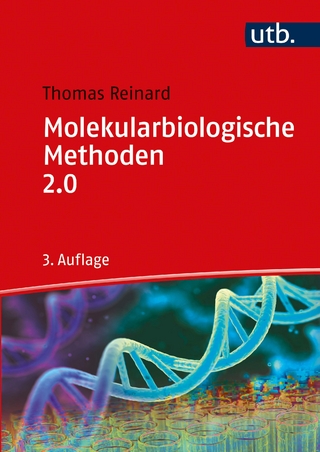
Optimization-based Molecular Dynamics Studies of SARS-CoV-2 Molecular Structures
Springer International Publishing (Verlag)
978-3-031-36772-4 (ISBN)
COVID-19 has brought us extensive research databases in the fields of biophysics, biology, and bioinformatics. To extract valuable structural bioinformatic information of SARS-CoV-2 structural and nonstructural proteins, it is necessary to work with large-scale datasets of molecular dynamics (MD) trajectories that need to be optimized.
This monograph serves as a comprehensive guide to optimization-based MD studies of the molecular structures of SARS-CoV-2 proteins and RNA. The book begins by performing local optimization, taking into account the three-body movement and optimizing the noncovalent bonds of each molecular structure. The optimized structures reach a transition state that offers the best stability and lowest energy. The optimization process utilizes a hybrid strategy that combines mathematical optimization with various local search algorithms. This approach significantly reduces data volume while eliminating irrelevant bioinformatics data.To gain a thoroughunderstanding of molecular stability and the mechanism of action, it is essential to consider not only static NMR, X-ray, or cryo-EM structures but also dynamic information obtained through MD or Quantum Mechanics/Molecular Mechanics (QM/MM) simulations. These simulations capture the internal motions and dynamic processes of molecules. Furthermore, for each protein, the structural bioinformatics obtained from the optimized structure is validated by analyzing large-scale MD trajectory databases, which are openly and freely available online. The analysis includes key structural bioinformatics aspects such as salt bridge electrostatic interactions, hydrogen bonds, van der Waals interactions, and hydrophobic interactions specific to each SARS-CoV-2 molecular structure. The book also delves into discussions on drugs, vaccines, and the origins of the virus. Additionally, pandemic mathematical models, including those incorporating time delays, are explored.This book is particularly valuable for professionals working in practical computing roles within computational biochemistry, computational biophysics, optimization and molecular dynamics, structural bioinformatics, biological mathematics, and related fields. It serves as an accessible introduction to these disciplines and is also an excellent teaching resource for students.
lt;p>Dr Jiapu Zhang received bachelor degree in 1993, first master degree in research in 1996, both from Qufu Normal University, P.R. China; second master degree in research in 2000 from National University of Singapore, Republic of Singapore; a PhD degree in 2005 from Federation University, Australia; and then a formal postdoctoral fellowship training from CSIRO (Commonwealth Scientific and Industrial Research Organisation), Australia.
Dr Zhang also received honors in Australia and worldwide for his prion research. In 2011, the report of MIT (Massachusetts Institute of Technology) Technology Review on his prion results caused worldwide impacts so that several organizations (e.g., the Physics Society of Iran) published his prion results in seven languages. NHMRC (National Health and Medical Research Council) of Australia has assigned him review tasks on prion projects. CSIRO once conferred him an award (together with Drs. Varghese JN and Epa VC) for rabbit prion protein research. He has been a reviewer for many top academic journals (e.g., Nature). All these made Dr. Zhang feel honored for his prion research.
1 Papain-Like cysteine protease (PLpro).- 2 3C-Like protease (3CLpro).- 3 RNA-dependent RNA polymerase (RdRp).- 4 RNA-helicase.- 5 RNA-helicase binding with [RdRp, NSP7, NSP8a, NSP8b, pRNA, tRNA, ADP-Mg2+, ATP-Mg2+].- 6 RNA-helicase binding with [ADP-Mg2+, ATP-Mg2+, and RNA].- 7 Spike (S) glycoprotein.- 8 Spike (S) glycoprotein D614G mutant.- 9 Spike (S) glycoprotein N501Y mutant.- 10 Spike (S) glycoprotein N165A-and-N234A mutant.- 11 SARS (SARS-CoV-1).- 12 MERS-coronavirus (MERS).- 13 Human-ACE2, human-L6, human-L6R, human-nAChRs.- 14 PLpro binding with 12 compounds.- 15 3CLpro binding with N3/Lopinavir/Ritonavir.- 16 3CLpro dimer binding with 7 HIV-inhibitors and Others.- 17 Spike RBDs binding with 50 drugs.- 18 Human ACE2 ectodomain binding with 78 drugs.- 19 Spike-and-ACE2 binding with 100 drugs.- 20 Envelope protein (E-protein).- 21 Membrane glycoprotein (M-protein).- 22 Nucleocapsid phosphoprotein (N-protein).- 23 SARS-CoV-2 RNA genome.- 24 NSP7, NSP8, NSP9, NSP10, NSP16, NSP14.- 25 NSP15.- 26 Other mutants.- 27 Vaccines and Drugs.- 28 Pandemic Mathematical Models, Epidemiology and Virus Origins.- A Mathematical Optimization Algorithms and Free Energy Calculations.- References.- Index.
| Erscheinungsdatum | 21.10.2023 |
|---|---|
| Reihe/Serie | Springer Series in Biophysics |
| Zusatzinfo | XX, 953 p. 1 illus. |
| Verlagsort | Cham |
| Sprache | englisch |
| Maße | 155 x 235 mm |
| Gewicht | 1622 g |
| Themenwelt | Naturwissenschaften ► Biologie ► Genetik / Molekularbiologie |
| Naturwissenschaften ► Biologie ► Mikrobiologie / Immunologie | |
| Schlagworte | Bioinformatics • Computational Biochemistry • computational Biophysics • Coronavirus • Covid • molecular dynamics • Protein Structure |
| ISBN-10 | 3-031-36772-3 / 3031367723 |
| ISBN-13 | 978-3-031-36772-4 / 9783031367724 |
| Zustand | Neuware |
| Informationen gemäß Produktsicherheitsverordnung (GPSR) | |
| Haben Sie eine Frage zum Produkt? |
aus dem Bereich


